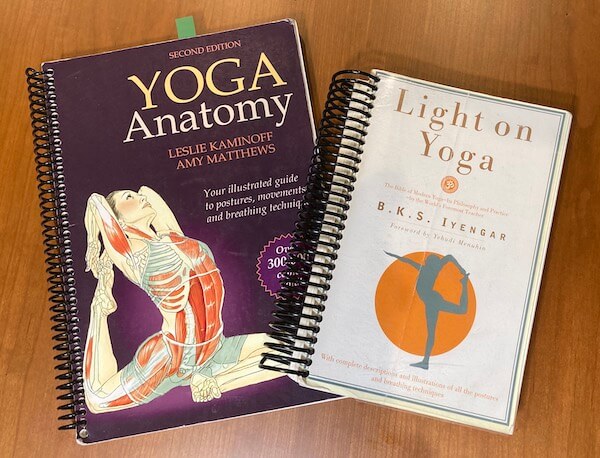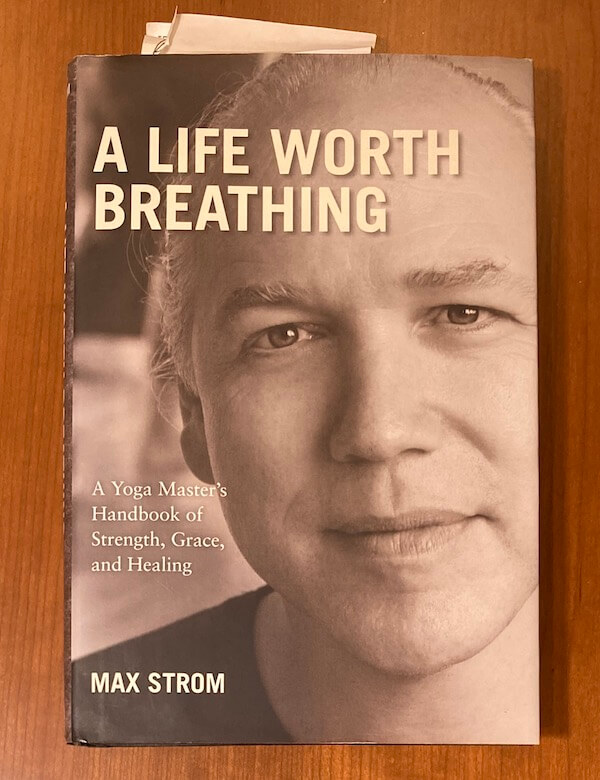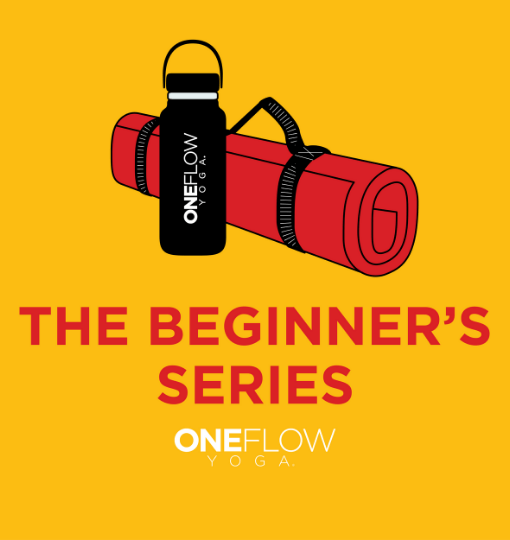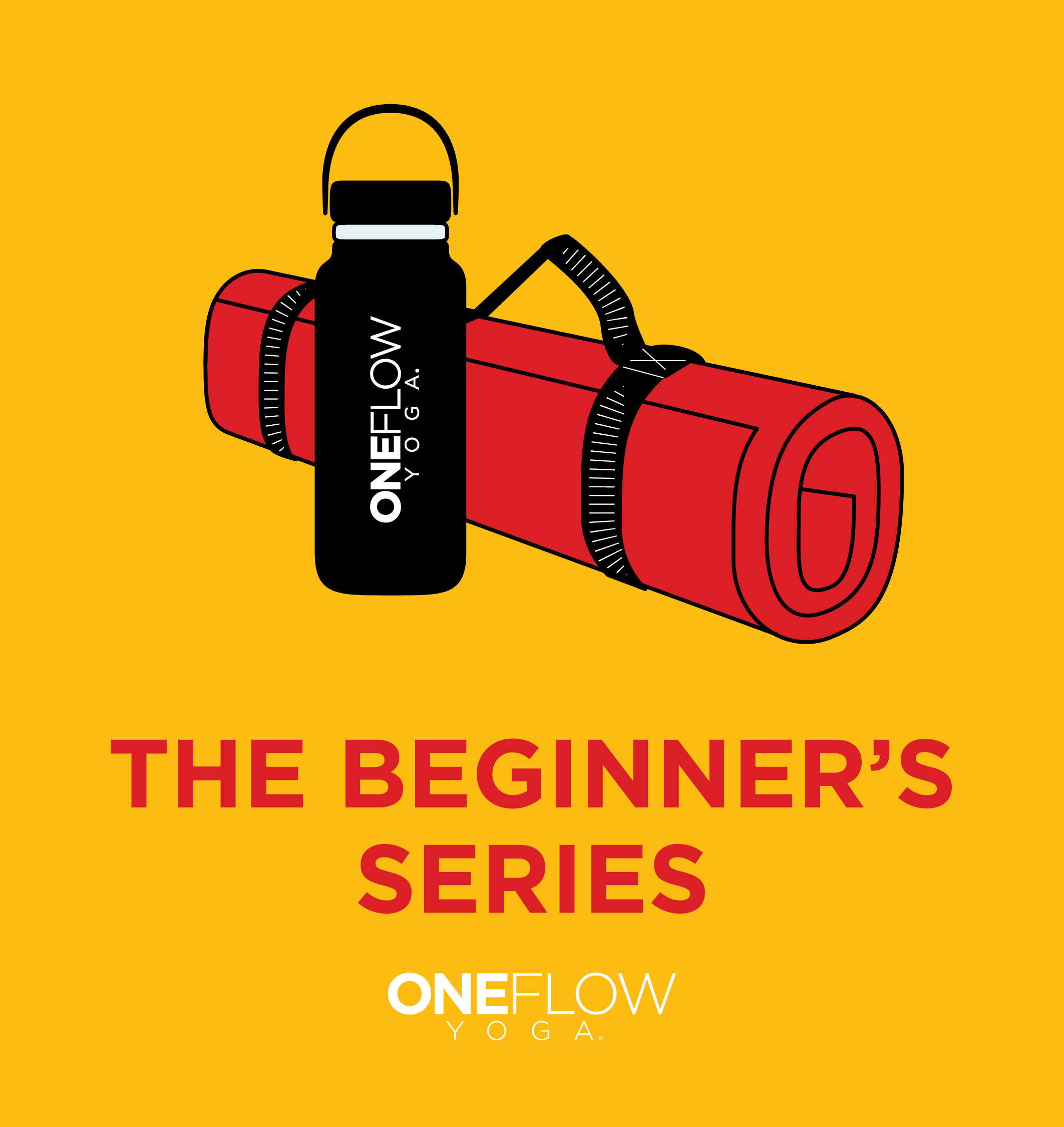If you are brand new to yoga and want to learn in the fastest and easiest way, it can be tempting to think, “Can I learn yoga by myself.”
Technically you can learn yoga by yourself. However, you will spend more time and money doing so to become a skilled practitioner and run a greater risk of injury. The best approach when learning yoga on your own is to find a high-quality online course.
We’ll explore the different options you have to learn yoga on your own and why it can be so risky. And we’ll show you the one thing you can do if you want to have a great experience learning yoga by yourself.
What Are My Options If I Want To Learn Yoga By Myself?
The most common methods to learn yoga on your own or at home are books, youtube videos, online yoga courses, yoga studios, and private 1-on-1 sessions. Each has its pros and cons relating to how effective, safe, and economical it is.
| Method | Costs | Safety |
| Book | $6-$50+ one time | Riskiest |
| Youtube Video | Free | Riskiest |
| Online Yoga Course | $50-$350+ one-time | Safer |
| Yoga Studio | $89-$180 monthly | Safer |
| Private Yoga 1-on-1 | $80-$200 each | Safest |
Learn Yoga From A Book
Books are readily available, come in hard copy and digital formats, and are durable. They allow you to practice practically anywhere and can also be valuable references. But, can you learn yoga from a book?
Books aren’t the best way to learn yoga. They are either too general, so you need several books to cover the topic, or too focused, meaning you need more books on various topics. And they are not interactive, meaning you cannot ask questions or see demonstrations.
The main appeal of a book is the price, which may range from a free ebook to $50+ for a well researched and produced text.
But books aren’t as cheap as they seem.
First, everyone asks, “What is the one yoga book I should get?? And there isn’t one. To cover yoga postures alone, you’d need at least 2 or 3.
For example, Light On Yoga is the book modern yoga postures are based on, but it’s not the best book to learn the poses. And most yoga posture books are not yoga anatomy books, so you need another one for that. That’s three books right there.
Plus, if you really want to explore yoga, you’ll need books on philosophy, sequencing, injury, movement, etc. Your library can add up quickly.
On the flipside is a book like “Yoga for Dummies,” which covers many topics but none in-depth.
Books also ask a lot of you as a reader. You have to take the time to read and study a book for it to be helpful.
To add another layer, you might have to read several books at once. If a book tells you to externally rotate your right leg or talks about a Sanskrit word, you may need another book to tell you what that means.
That’s not to mention books on yoga philosophy, which are a whole different beast and often require a teacher to unpack.
The biggest disadvantage of books is the safety aspect. When you learn yoga from a book, you don’t quite know what is safe and what is not except for the standard advice of “listen to your body.”
Pros
Practice anytime, anywhere. Relatively inexpensive. Durable. Great information.
Cons
You need several. Books require a lot of time to read and study to get the most out of them. Safety is left to the judgment of the student.

Learn Yoga From A Youtube Video
Video is a great format to learn yoga from. Because of its visual nature, you can see examples of postures. The price is right too, free, although you do have to watch ads. One commentator noted that it’s hard to practice when ads keep popping up.
And there’s quite a variety of videos to watch, with more being added daily. But that can also make it a challenge to choose.
On the downside, there is no structure to youtube yoga videos. This is a big issue, especially when you’re starting out with yoga. Beginners do best with a step-by-step approach to learning yoga instead of randomly bouncing from video-to-video.
For instance, you may enter a yoga teacher’s name into the search bar, but when 300 videos show up, which do you start with? It can be overwhelming.
The lengths of yoga videos vary significantly too. Many people will benefit from a 45-60 minute class length, but yoga videos are often 5-10 minutes long, which doesn’t even adequately warm you up.
The quality of teaching can be another challenge. Many teachers on youtube demonstrate poses instead of describing precisely how to get in and out of them. As a practitioner, this forces you to keep checking your screen instead of enjoying your practice.
It’s very distracting.
If you want to test this, try to follow along with the teacher by listening alone. You’ll be able to with skillful teachers.
The youtube algorithm itself is a problem because it will suggest videos like the one you finished. If you search “lower back yoga,” for instance, the next videos suggested on the sidebar typically focus on the back too. But you need to work more than one area of your body to have a complete practice.
Videos have the same safety issues as books; it is left to the student to make the call on what is safe and not.
Pros
Practice anytime and anywhere you have an internet connection. Free. Massive variety of videos. Excellent for visual reference.
Cons
Ads during classes. Lack of organization and structure for consistent learning. Not long enough. Quality depends on the skill of the teacher to teach.

Learn Yoga From An Online Course
Online video courses provide great value, allow you to practice on your own schedule, and, more importantly, give you structure.
Because they are videos, you’re going to be able to see visual examples. But unlike youtube, the content of a well-designed online yoga course is structured step-by-step so the student can be successful.
The feedback from an online course is not the same as with a live teacher. Still, often you can email questions or join a member community to get support, unlike a book.
Online courses typically cost more than books but less than in-person instruction.
Because the course is structured it can address the safety aspect in a more predictable way than books or youtube. For example, you will probably start with standing poses, which are great for beginners. There is no randomly popping up into a headstand here.
By the way, if you want to see what the best yoga poses are for beginners, click here.
Pros
Practice anytime and anywhere you have an internet connection. Economical. Excellent visual resource. Structured content to expedite learning. Learn from very skilled teachers. Opportunities for feedback.
Cons
More expensive than youtube and books. Feedback is not real-time.
Learn Yoga At A Yoga Studio
In-person classes are a popular way to learn yoga. A full-time yoga studio offers more than 30 classes a week with various teachers, so you get many options to choose from.
No two yoga studios are alike, ranging from local home-grown spaces to large national chains. It reminds me of bookstores. The best welcome you as part of the community where people know your name. And my favorite part, you have friends there.
Taking classes in-person allows the teacher to see you. They can suggest modifications based on what they observe. Plus, they get to know your practice. These facts mean you will often progress faster with a regular practice at a yoga studio than at home.
The quality of instruction will be different from studio-to-studio and teacher-to-teacher. Keep trying studios and teachers until you find one you connect with.
Practicing under the watchful eye of a yoga teacher will be safer too than at home. In our classes, we will step in if people are doing dangerous things. It’s part of our role to take care of people.
One other benefit of practicing at a yoga studio is it gives you somewhere to go. You may not have an ideal space for yoga at home, or you have furry friends and kids that make it a challenge.
Pros
You are a part of a community. The teacher can see and respond to your practice. You can learn yoga faster. A supportive, fun environment. A safer option under the watchful eye of a teacher.
Cons
Not available everywhere. Limited to the class schedule offered. The quality of teaching varies. No two yoga studios are the same.
Learn Yoga From Private 1-on-1 Lessons
Private lessons are ideal if you are recovering from an injury or want a tailor-made practice.
In a private yoga session, you work 1-on-1 with a teacher who will ask you about your specific goals and needs and then create a custom class plan just for you.
Like other custom creations, this is the most expensive option. But for the price, you get a lot.
- A practice created especially for you.
- A time that works best for you.
- Practice from your own home.
- The safest option.
With the introduction of technology, yoga teachers can do a video call with you. So you can live in a different part of the country and still practice.
As safe as yoga studios are, they are still group classes. Having a private session allows the teacher to focus entirely on you and is the best way to stay safe.
Pros
Tailor-made class just for you. Convenient. Available online. The safest option.
Cons
Most expensive choice.
Is Learning Yoga On My Own As Effective as In-Person Instruction
Max Strom, a veteran yoga teacher, and author says this about learning yoga on your own:
“I highly recommend that you practice under the guidance of a teacher for at least three years before replacing your classes entirely with a home practice.”
Max Strom: A Life Worth Breathing

I would agree because you don’t know what you don’t know. Practicing with a teacher can save you a lot of time and be less frustrating as it lessens the chance of injury or fruitless searches.
For example, you might decide you want to do handstands and spend hours “kicking up” on a wall. Only months later, after a lack of success, do you realize you need to develop strength and flexibility in several parts of your body before you try handstands.
You can practice at home by yourself. But it’s smart to spend the first 2-3 years learning in-person before moving in that direction.
An alternative that is almost as good: Start with a well-designed online yoga course, then practice with that same teacher via online classes before going it alone. This solves the issues of both cost and accessibility.
This is the best way to have a great experience learning yoga by yourself and gives you a reliable foundation as you continue your yoga journey.
What to Know Before Learning Yoga On Your Own
“How do I know if I can learn yoga by myself?” Here are some questions to help guide you.
Are you close to any yoga studios?
Where you live can play a decisive role. If you live in a rural area or place where there aren’t any yoga studios, then learning yoga on your own might be the best option.
How disciplined and motivated are you?
Are you someone who can follow along in a book and stick with it? If so, you may be the type who would enjoy learning on their own. However, if you prefer the energy of a group or need help with your motivation, then you might feel lonely learning yoga by yourself.
Are you good about listening to what your body needs?
For instance, do you regularly get enough sleep? Do you take breaks when you’re tired? If the answer to both is “yes,” solo yoga is definitely an option.



